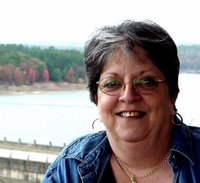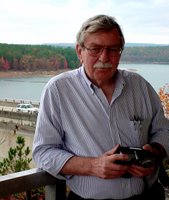1945-1973
(Run originally 5/4/04 on our old site)
Ernie Simpson
Fifteen
Our Cars
When Diane and I married in 1962, we had the 1960 Volkswagen, 36 horsepower, air-cooled, no radiator, no air conditioning, but we loved it. It made many trips to Searcy and Pine Bluff. I drove it the only speed the car knew, wide open. It would do 72 mph with a good tailwind. Larry and Sue had a DKW, a three cylinder German car, built by Auto Union of Germany. He soon traded that for a Pontiac Tempest.
A week before we were to get married, I burned the engine up in the VW because of a faulty thermostat in the air-cooled engine. We borrowed a ’55 Ford to take on our honeymoon to Hot Springs from the mechanic who was replacing the engine.
Although we liked the car, it was constantly giving us problems. I blew the engine on it again soon after she and I were married, and found that Sears had a rebuilt engine in their catalog. I had an account with Sears and thought I would order one from the catalog. Well, it took too long to get the engine to the Blytheville store, so Larry and I decided to go to the nearest distribution center and get one.
The nearest one was in Atlanta. So he and I loaded up in Larry’s car one Friday afternoon and headed out. We drove all night, and got to Atlanta by early morning on that Saturday.
We went to the main catalog office, and when they checked my account, they said I had not had an account with Sears long enough to put that much credit on my bill. We were both angry, but there was nothing we could do except go back home. We got to Cooter on Sunday afternoon. I have never liked Sears since.
My value in that experience was the friend I had who knew I didn’t have a car, took his good car and said let’s go. He asked no questions, he just knew my car was broken, and he was going to help me get it fixed. How did I solve the problem? I bought Uncle Carthel’s 1950 Ford for $125. It worked out fine, and was very reliable.
Larry and I loved sports cars, more particularly the British. The Thunderbird/Corvette saga was long gone, and we were studying the more traditional sports vehicles. We would not dare think of anything domestic. I was lucky enough to spot a 1960 MGA roadster at a car lot in Blytheville, drove it back to Cooter and showed Diane. She encouraged me to buy it for the $850 they were asking, so I did.
I then drove it over to show Larry. He loved it and it was not too long until he came up with a black Austin Healey Sprite, 1959, the Bug-Eye. Very light weight, with a good power to weight ratio, and was great fun to drive. We often raced the back roads between Cooter and Steele, the MG having greater power on the straights, but the Sprite would get the MG in the corners.
Both cars were unreliable, but were the purest form of a true sports car. When it rained, you got wet, when it was cold, you were cold, and when it was hot you were hot. Neither the MG nor the Sprite had roll up windows, instead had side curtains to keep out some of the weather. We spent hours talking about sports cars, music, and how to teach our kids in the band to play.
Sixteen
The Winter of ‘63
My son Scott was born May 28, 1963, and when the Christmas Holidays approached, we got ready to make the journey from Cooter to visit all the grandparents. We were planning to go to Pine Bluff then back up to Searcy. On the afternoon of the 22nd of December, it started snowing, and before it was over, there was an average of ten inches covering the ground in central Arkansas.
Diane and I had our Pontiac Tempest, bought new in the summer at Hayti, so we made preparation to head out. Larry and Sue also had a Tempest, a station wagon. It was still snowing when we left in the afternoon. We talked to Larry and Sue, they planned to leave around the same time and go down highway 55 and across I-40 to Little Rock where his parents were.
We made a change of plans and went first to Searcy, figuring if things were really bad, we’d at least be halfway in Searcy. The snow was deep and I had a concern about crossing the White River in Newport. Big trucks were having a hard time but, luckily, we had no problem. This was the main road, highway 67, so everyone had to use that route. The travel was slow, and it took the entire afternoon to get to Searcy, and we arrived just about dinnertime.
We spent the night in Searcy, with mom and dad, and headed to Pine Bluff the next morning, on Christmas Eve. We took the back roads down through England and Lonoke, and the snow had not been packed down on the roads that early morning. There was only one lane for travel, and I stopped along the way and made a picture of Diane and Scott.
The weekend other than that was a good time, a beautiful Christmas and since it was Scott’s first Christmas, the snow made it special. Looking back, this decision was probably not the smartest I have made. At the same time, Larry and Sue were stranded in Marion, north of West Memphis.
The State Police had closed I-55, and Larry ruined the engine of his station wagon by letting the car run all night to keep them warm at a truck stop. The timing chain in the Tempest wouldn’t hold up to an all night idle. I didn’t learn of this until we got back to Cooter days later. That record snow has not been duplicated in Arkansas since that date, on Christmas Eve.
Seventeen
Leaving Cooter
Don Minx made a surprising comment to me after I had been in Cooter about three years. Larry’s and my programs were developing and the kids were doing a great job. He came to me at a visit to our schools and conducted a rehearsal with the Cooter Band. We had just returned from a Southeast Missouri Teacher’s Association meeting, and the Cooter Band had been invited to play for the opening session. It was an honor, and the band had performed well.
In a conversation after the rehearsal and at dinner that evening, he said bluntly, “Ernie, you’ve got to get out of Cooter.” I said why, things are going well, and the band is playing fine. He told me that I’d taken them as far as they can go, and I would only hold myself back by staying. I was shocked to hear this, as I did not think of hitting a place that could not be made better; besides, that wasn’t the point, was it? I thought these kids were much like my own family, and it was difficult to think of leaving them.
Mr. Minx said that’s right, it is like a family, and that’s the problem. “They’re not your family,”
After talking to Diane, I took the question straight to Larry, and he and I talked about it a great deal. Here was the chance to move up professionally, and greater opportunities in the field in northern Arkansas. His opinion was invaluable, and I sought it in this big decision. There were several band jobs open in and around Jonesboro, so I started looking at them all.
Pat Richardson encouraged me to move to Manila, since he was probably the first band director there, in the 1950s. He really wanted me to move to Manila, he believed it had the greatest chance for success as a program. He had success while there, but the lure of private business in the music store and the uniforms for band business was more what Pat wanted. He and I drove down one Saturday from Cooter, and we jimmied the window of the band room and got in. I looked over the band room, and immediately liked it.
We talked it over, again and, after then-director Mike Chillcutt left, I sought an interview and was offered the job. The band was weak, but had potential.
Larry presented me with a going away present, a gold plated Bach 7-C trumpet mouthpiece. I still have it as a treasured possession, and did not use it for years. I was proud to show it off, as a gift from my friend.
Eighteen
The Masters
We kept in constant contact by telephone during my time right after leaving Cooter, I visited Steele, and he came to Manila. We worked hard to keep in touch with our friendship.
In 1966, we had a surprise: Arkansas State was offering a Master’s degree with emphasis on music education. This was exciting, since we had talked about commuting to Memphis State to get our degree there. This was not a great option; we had no desire to attend Memphis State.
We made application to the college of fine arts in the summer of 1966, and were accepted. The summer classes started at 7:30 a.m. and driving from Manila every day made it difficult. We managed, and Diane and Sue were supportive and encouraging. It took one full year of Tuesday and Thursday evenings, and two full summers, each summer term five weeks long, to obtain the necessary hours. It took 30 credit hours, as I recall.
On the day of graduation in 1967, we took our comprehensive finals, and were really discouraged when we came out of the test. The finals took four hours, and were a compilation of all material we had covered in the degree with each professor.
Of course, a basic requirement of the degree was a B average or a 3.00 out of a 4.00 grade point. We had managed the entire time with a great deal of work to keep our classes at the proper grade level.
As we finished the day, and went back home, the graduation ceremony was planned for that night. I called Larry and expressed concern about how we had handled the final, and was not sure the grade we would get in the final would be sufficient to keep our 3.00 average requirement for graduation. The grades had not been posted before we left for home that afternoon, and we were completely in the dark as to our results.
He was worried too, and I told him that the one man who could tell us would be the music department chairman, Don Minx. After all, I said, I was not going to drive over to Jonesboro for the ceremony, and be pulled out of the line. It would be totally embarrassing to be pulled out of the ceremony, by some dean who would tell us, “Sorry, but you flunked the final, you won’t be graduating.”
I called Mr. Minx, and told him our dilemma; “Mr. Minx, if Larry and I didn’t pass the final, we are not going to come over for the ceremony.“ On the other end of the phone, Mr. Minx started laughing uproariously. I asked him why he was laughing, and he said, “Don’t worry, you both passed.”
It was total relief for me to be able to call Larry and tell him. We both agreed that Mr. Minx must have had a hand in the final say as to our grades, because surely I could not have passed that final with the answers I put to the questions. Larry and I went to Jonesboro with our families, Diane and Sue, and got our MSE degrees that night
There were four in the Master’s program in music, and the very first class to graduate from Arkansas State with a Masters in music that hot summer in 1967: Alan Mickel, Jack Ballard, Larry Maness and me.
We both were eternally grateful to Don Minx for his efforts to encourage us, and to our wives for their support in keeping us going. It was an ambition fulfilled … thanks to lots of people dear to us.
Nineteen
Leaving Steele
How the contact was made, I’m not sure. He called me after we got our degree, and talked about going forward. Camdenton, Missouri, by Lake of the Ozarks. A great little town, with the people he wanted to be around. Steven and Marc were still little and the time was right. Sue was encouraging, so they made their decision, and left a grieving little town. The best band program that little town had seen, and the one who had brought it to life was leaving.
I loved Larry’s sense of humor, and how dry and funny he could be. His band library at Camdenton was a good one, and we shared literature for our bands. I was looking for a particular piece to play at contest, and didn’t want to spend the money without checking out the piece ahead of time. I called Larry and asked him for a Sousa march, called The Free Lance. It soon came in the mail, I passed it out to the kids, liked how it sounded, and we started to work on it.
I soon got a note in the mail, and it gave me the news of how things were going with the family, school, and a P.S.at the bottom,” Did you get that Free Lance piece?” I laid the note aside, and in a few days had forgotten about it. A few more days later, I got another note in the mail, and it had only nine words. “I said, did you get that Free Lance piece?” I laughed, and picked up the phone. We had a good chuckle.
Twenty
Leaving Manila
1968 was a year burned in my memory for many reasons, the birth of a wonderful son, the loss of my young wife, and heartbreak and change in order to survive mentally were present with me for years to come.
Larry and I had kept in contact after 1967, and our progress in our profession was working as the pattern should, we supposed. They were settled in Camdenton, his program was going well, and Diane and I were both teaching in Manila. She had the choral program and one class in English.
I had started becoming acquainted with teachers and directors in northeast Arkansas, and was working to become more involved with the workings of the band associations, both regionally and state wide.
Stuart Leslie was born in July of 1968, and I gave him the name I thought was strong, and was honored to give him Larry’s middle name. In August, Stuart Leslie was about a month old, when Diane had become ill. Al Poston of Jonesboro and a couple other directors and I drove to Mississippi State on Saturday August 3rd to hear a clinic by a famous band drill instructor, Bill Moffit. We were looking forward to it, and headed out early that morning in order to get to the clinic that hot August day in plenty of time.
Diane and I had a new Mustang, and she decided to take the boys to Pine Bluff that weekend while we were at the clinic in Mississippi. Scott was about five, and Stuart was about four weeks old. She was sure she would make it fine, the car was new, it was not a bad drive, and she would have been there in about two to three hours. She left that Saturday morning with the boys, but when she got to West Memphis, the air conditioning in the Mustang quit. It was hot, and she made efforts to get it fixed at the Ford place there, but they didn’t have the parts, so she continued.
When she got to Pine Bluff, she was in bad shape. She went in directly to her parents, Ivon and Norman, and told them she had a splitting headache. She could barely speak because of the pain. They put her to bed, and took the boys, and took care of them.
Norman went in later that evening to see about her, and she would not awaken. He took back the covers and tried again to wake her, when he realized she was comatose. They called an ambulance and they rushed her immediately to St. Vincent’s in Little Rock. I got a call early that Sunday morning, from Norman. “Ernie, Diane is bad sick, you need to come right away.” I hung up the phone, threw a change of clothes in a bag and went out to start the MG. It started fine, and I headed out. The top was down from my last time to drive it, and I didn’t want to take time to put it up. I drove fast, and was doing fine till I got to just north of Stuttgart. The engine quit, and I couldn’t figure what was wrong.
I pulled off to the side of the road, and got under the car, and discovered the electric fuel pump had lost one of the contacts. I rewired it, and the car got fuel and I started again. By the time I got to Pine Bluff, I was sunburned and worn out. I checked with Norman, and he said Ivon was in Little Rock. I got the Mustang and headed out. Norman was keeping the boys.
Diane was in a Critical Care Unit, called intensive care then, and was in a coma. The boys were at Tommy and Virginia’s, Ivon’s sister, and were well. I called Larry and told him what was going on. He was about to start school and was getting ready, but loaded up his family and came to Little Rock. His parents lived in west Little Rock, not far from the hospital.
He kept vigil with me. There were many from Manila who came, Pine Bluff, and Little Rock. I stayed at the hospital at night, and drove to Pine Bluff and slept a little in the day and headed back. My brother Jim came down from Searcy to be with me too. Dad was not well enough to travel, and besides there was nothing that they could have done.
Doc Shaneyfelt came down from Manila, and conferred with the attending physician. They agreed she had a cerebral hemorrhage, and would be incapacitated for a log time, but would recover.
I went in to her each time they let me, and stayed by her bed. I was not sure she knew if I was there or not, but she would squeeze my hand when I held it and spoke to her, so I felt sure she was aware. Ivon had little patience for sitting and waiting on progress, and commented once as she was pacing the floor, ‘This waiting around will just kill you.’ Another lady in the waiting room was offended at this, and said, ‘No, it will sure not!’ Ivon said no more.
On Sunday morning the 11th, I had gone over to Larry’s parents, and they offered me a shower. I showered and came out. Ivon was at the hospital. When I came out of the shower, Larry told me the hospital had just called, and Diane had just passed away. It seems Ivon was trying to feed her just a bite, and she coughed and had a massive stroke and passed away in just a moment or two.
When I got to the hospital, Ivon just looked at me, with a hurt and defeated look, and turned and walked away without speaking. Jim was there, and drove me to Pine Bluff. I left and went back to Searcy, then on to Manila, and got some clothes and came back to Pine Bluff to make the arrangements.
Larry, Pat Richardson, Al Poston were some of the pallbearers. Mr. Minx was at a conference in Las Vegas, and was heartbroken when he called and I told him the news. Others I can’t remember. But Larry was there, and helped me through. I always was deeply grateful for his support in that bad, bad time. Many even came down from Cooter to the funeral; the floral tribute at the gravesite was the largest I have ever seen for anyone.
Several months later, back in Manila, it must have been late in 1968 or early 1969, the phone rang in the middle of the night. It was really late, about 2:30 a.m. I awakened and reached for the phone, it was Larry.
He said, “Man, are you all right?” I said, yes, I am fine, what’s wrong? He said, “I had a bad dream that you needed me and something was wrong. I wanted to call to make sure you were all right. Are you sure you’re all right?” I promised I was O.K., the boys were fine, and I really was glad he called. He was fine once he realized everything was all right. He said call me if you need me. We said goodbye and hung up. I thought about that for a long time, and have never forgotten it.
That’s just how he was. He was my friend, and he cared about my welfare.
To be continued
 I do have a question: Who's sidekick was he, Gene Autry, Roy Rogers, etc.? I don't recall.
I do have a question: Who's sidekick was he, Gene Autry, Roy Rogers, etc.? I don't recall. 


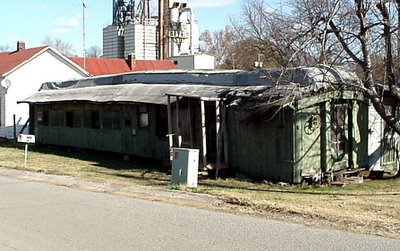
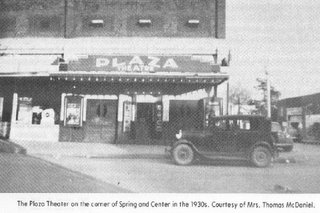
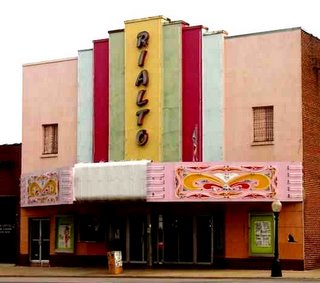
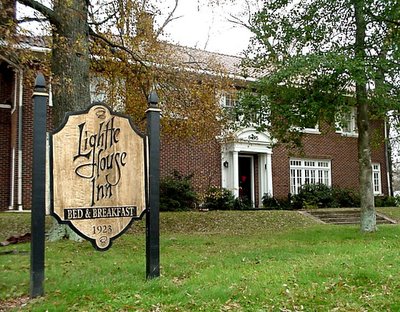


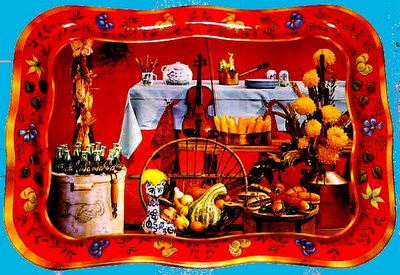
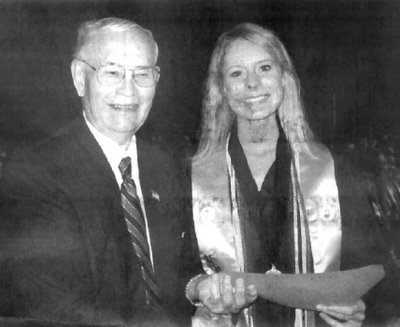
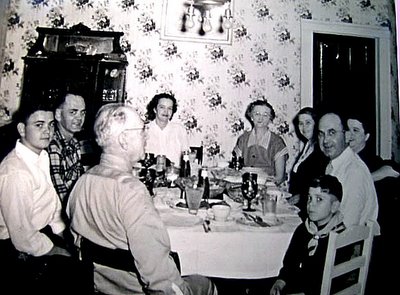
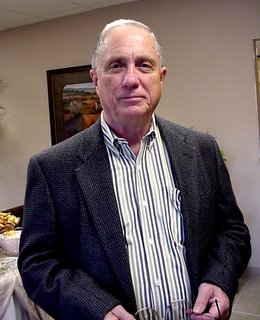

 Didn’t have to go far to get our first picture. This one was here on North Valley Road, just ¾ of a mile up the street.
Didn’t have to go far to get our first picture. This one was here on North Valley Road, just ¾ of a mile up the street. 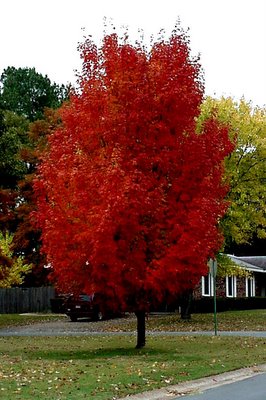 Then into town, to Ella Street, the one that runs from Beebe-Capps over to the high school, featuring a myriad of colorful trees.
Then into town, to Ella Street, the one that runs from Beebe-Capps over to the high school, featuring a myriad of colorful trees.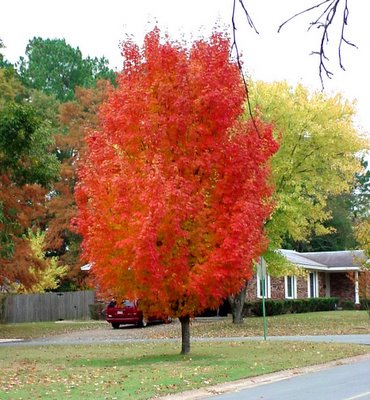 Look in the other direction on Ella and, Ouila!, another nice picture.
Look in the other direction on Ella and, Ouila!, another nice picture.  We went up 67 to Bald Knob, then swung over onto 167 heading toward Batesville. About halfway between Pleasant Plains and Batesville is a very nice state-maintained rest stop – clean and very nicely taken care of. Nice view, too. With plenty of parking on the slope, it was possible to track down both panoramas and small shots.
We went up 67 to Bald Knob, then swung over onto 167 heading toward Batesville. About halfway between Pleasant Plains and Batesville is a very nice state-maintained rest stop – clean and very nicely taken care of. Nice view, too. With plenty of parking on the slope, it was possible to track down both panoramas and small shots.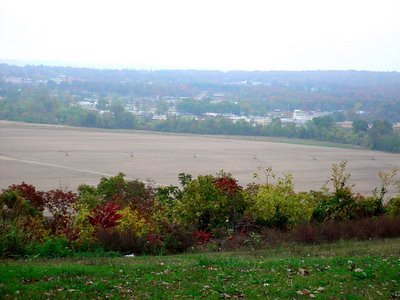 Not wanting to get tangled up in the Saturday shopping tangle in Batesville, before we got there, we swung left on AR25, heading toward Heber Springs. A little creative parking two blocks off the road got us some nice shots of what I think of as the “Batesville Basin.”
Not wanting to get tangled up in the Saturday shopping tangle in Batesville, before we got there, we swung left on AR25, heading toward Heber Springs. A little creative parking two blocks off the road got us some nice shots of what I think of as the “Batesville Basin.” 
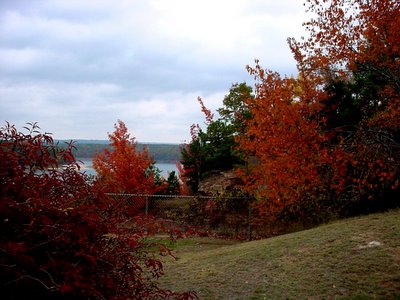

 The overlook at Greer’s Ferry Dam could probably make money if admission were charged for it. Blessedly, it’s free and may be the best free view in the entire state.
The overlook at Greer’s Ferry Dam could probably make money if admission were charged for it. Blessedly, it’s free and may be the best free view in the entire state.